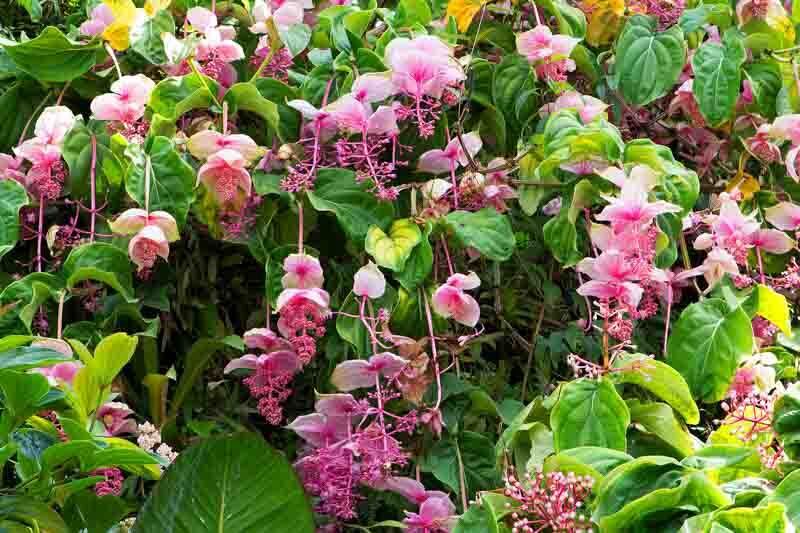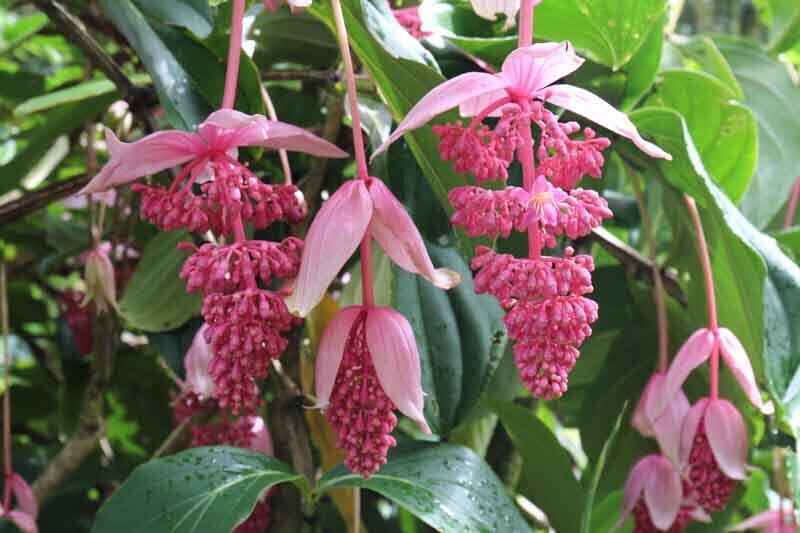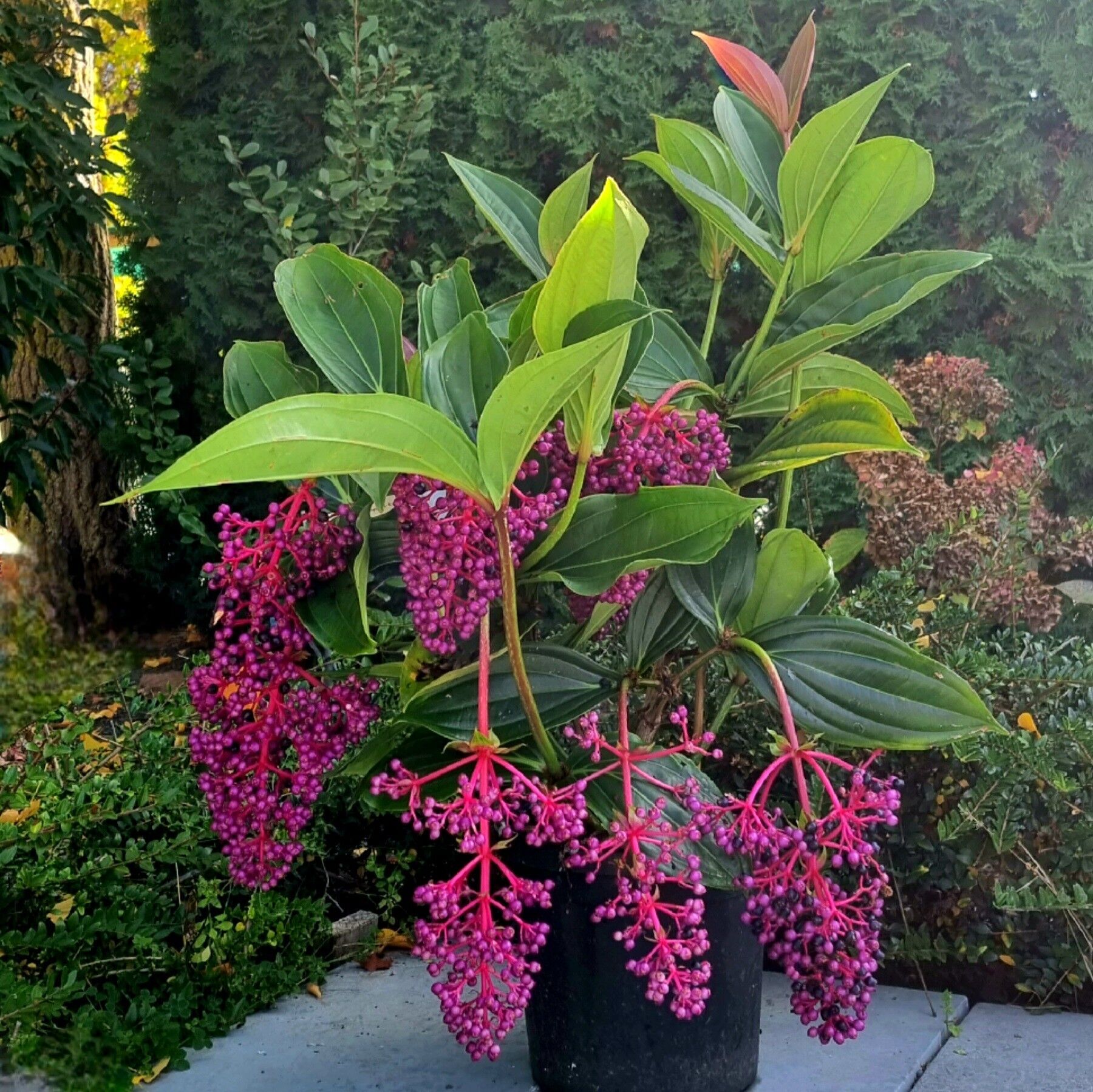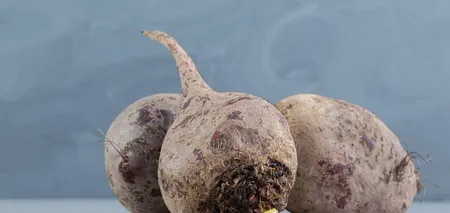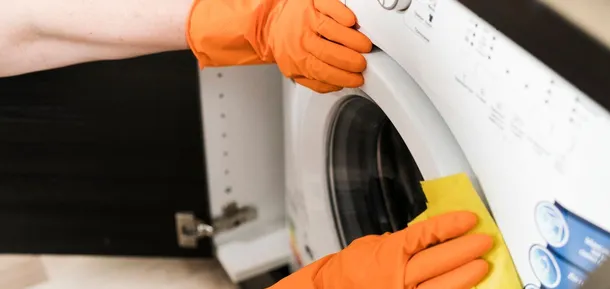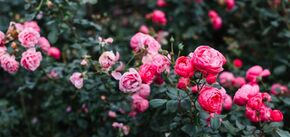News
An alternative to orchids: how to grow a medinilla flower at home
Exotic indoor plants always attract attention due to their beauty and uniqueness. Among the numerous species, a special place is occupied by those that combine exoticism and ease of care.
One such plant is Medinilla magnifica, which has become a great alternative to popular orchids. This tropical plant with lush flowers is not only pleasing to the eye but also has attractive characteristics for home cultivation, and experts have explained what they are.
What does a medinilla look like
This is an extremely beautiful tropical plant native to the Philippines. It is known for its large dark green leaves that have a leathery texture and visible lighter veins. However, most attention is drawn to its large pink or lilac-pink flowers, which are collected in luxurious inflorescences hanging on flexible petioles, forming cascades. The plant is able to bloom from February to August, which is another advantage for those who want to decorate the interior with bright colors for a long period.
Growing conditions for medinilla
In order for the medinilla to develop and bloom, it is necessary to provide it with appropriate conditions. An important aspect is the temperature regime – although the plant is tropical, it can withstand temperatures down to +16 degrees, which is a plus for growing at home. The key for medinilla is high humidity, so it is important to maintain it at 75% in winter and summer. It should also be remembered that the plant does not like direct sun, so diffused lighting is best for it.
Suitable soil for the medinilla
Medinilla prefers a fertile, permeable soil with an acidic pH that should be slightly moist at all times. For planting, you can use a ready-made mixture for epiphytes or prepare it yourself by mixing leafy soil, chopped sphagnum moss, and peat. Drainage is also an important aspect, as the plant does not tolerate stagnation of water in the roots.
Temperature conditions and watering
It is important to maintain optimal temperature conditions for medinilla. In summer, it is comfortable at a temperature of 20-25 degrees, and in winter – 15-16 degrees. During this period, watering should be reduced and fertilizing should be stopped. For irrigation, use water at room temperature without chlorine. The plant does not tolerate wetting of the leaves, so it is important to avoid getting water on the leaves during watering.
Medinilla needs a well-lit place but without direct sun. Window sills on the south, southeast, or southwest sides are best for it. If the plant is far from the window, it should be illuminated with lamps in winter. Moving the flower during flowering can cause the buds to fall off, so its location should be chosen with these requirements in mind.
Fertilizing the medinilla
During the active growing season, that is, from spring to autumn, medinilla needs to be fertilized every 10 days. For this purpose, mineral fertilizers suitable for ornamental foliage plants are used. In winter, fertilizing is stopped because the plant is dormant and does not need additional nutrition.
Propagation of the medinilla
Medinilla magnifica can be propagated in several ways. The easiest is by cuttings left over from pruning. Cuttings with two or three buds are buried in a moist substrate, covered with a glass jar, and placed in a warm, bright place. If the conditions are right, after a few weeks the plant begins to take root actively. Another method is propagation by seeds, which can be purchased in specialized stores.
Transplanting a medinilla
Medinilla should be transplanted annually in the first few years, and after reaching a height of 100 cm – every two to three years. For transplanting, choose a wide, shallow pot with drainage holes. This will allow the roots of the plant to develop well. When transplanting, it is also recommended to cut off long branches to form a compact shape.
In order for the medinilla to give its luxurious flowers for a long time, you need to be attentive to its needs. It loves warmth, moisture, and good lighting. In addition, it is important not to forget about careful watering and creating optimal conditions for the development of the root system. If these conditions are met, the medinilla will become a wonderful decoration for your home.
Subscribe to the OBOZ.UA channels in Telegram and Viber to keep up with the latest events.







